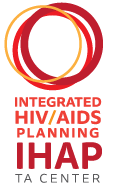Review of the importance of new member orientation for Ryan White HIV/AIDS Program (RWHAP) Planning Council/Planning Body (PC/PB) members as well as ongoing training.
Guest speaker Dottie Rains-Dowdell from the New Jersey HIV Planning Group discussed a successful mentorship program, Group breakouts then shared challenges and solutions with recruitment and retention.
Successful Strategies to Retain Planning Body Members Key Takeaways
- Orientation considerations: Orientation content should include information that bolsters members’ participation confidence. Topics include plain language, terminology, and data translation; orientations for co-chair that include facilitation skills; a review of chair and members’ roles; a history of meaningful involvement of people with lived experience; and how to use planning council-specific resources. Streamline orientation and build in breaks and opportunities for check-ins and reflections.
- Diversify engagement options: Platforms like Kahoot or Menti offer ongoing ways for members to provide input. Capitalize on members’ expertise and encourage peer learning; unidirectional facilitation can create disengagement and disconnection. Restructuring meeting times outside of a traditional work-week format can strengthen youth recruitment.
- Communication is connection: Communicating with planning body members outside of the routine, formal channels (i.e. email) fosters relationships and can help members feel more directly seen and valued.
- Highlight successes: Words or tokens of appreciation–like a member spotlight or membership pin–strengthen members’ feelings of belonging.
- Ask for input: Soliciting membership feedback through evaluations and/or exit interviews help identify areas of success and opportunities for growth.
The Community Engagement Learning Series is a three part learning series focused on peer-to-peer sharing on recruitment, retention, and sustained community engagement in jurisdictional HIV prevention and care planning bodies.
Supporting Files
Part of Collection
This resource was developed by
IHAP TA Center
